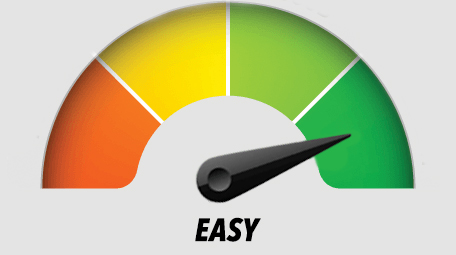Throughout the 1990’s, Ferrari experienced different issues ranging from lackluster sales to criticism of lack of engineering. The 80s and 90s Ferrari lineup needed much work as models like the 412, Mondial, 348, and even the F50 were a drastic detour from the lineage Ferrari was known for. This era, however, was not a complete bust as models like the Testarossa and the F40 were well received and continue to rise in value.
When former Ferrari President Luca di Montezemolo took the helm in 1991, he wanted Ferrari to regain its position as a leader in Formula 1 and exotic sport cars. How he did this was through the introduction of the all new 360 Modena.
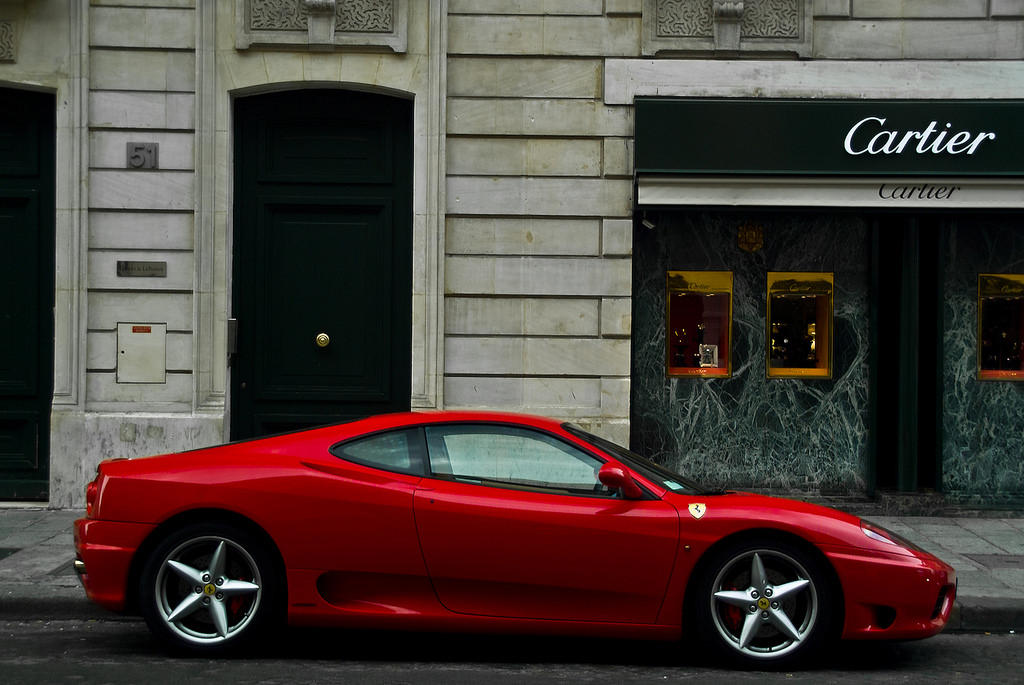
The 360 Modena was to be Montezemolo’s bench mark and help Ferrari increase its falling sales. The 360 was the first V8-powered car designed from scratch under his leadership, and while Montezemolo’s demands were challenging, the new model had to be larger and more refined, yet lighter and faster than its predecessor, the Ferrari F355.
It has been nearly two decades since the introduction of the Ferrari 360 Modena and there may be no better choice to get into your first Ferrari than the 360 Modena. It looks as modern as any Ferrari sold today, and can be purchased for cheaper than a brand new BMW M3.
The mid-engine Ferrari 360 Modena was fitted with a 400 HP 3.6-liter V8 and six-speed transmission offered in both F1 (electrohydraulic) and manual. Although the V8 is a bit under powered by today’s standard, the Ferrari 360 Modena is no slouch by any means. Not to mention the exhaust note will go down in history books as one of the best sounding cars ever. The 360 Modena sprints to 60 MPH in just under 4.4 seconds and tops out at around 186 MPH. Montezemolo’s goal was to make a more everyday friendly exotic sports car, that was not only more reliable, but also faster around the Ferrari test track, than the F355. Needless to say, the 360 Modena exceeded all expectations.
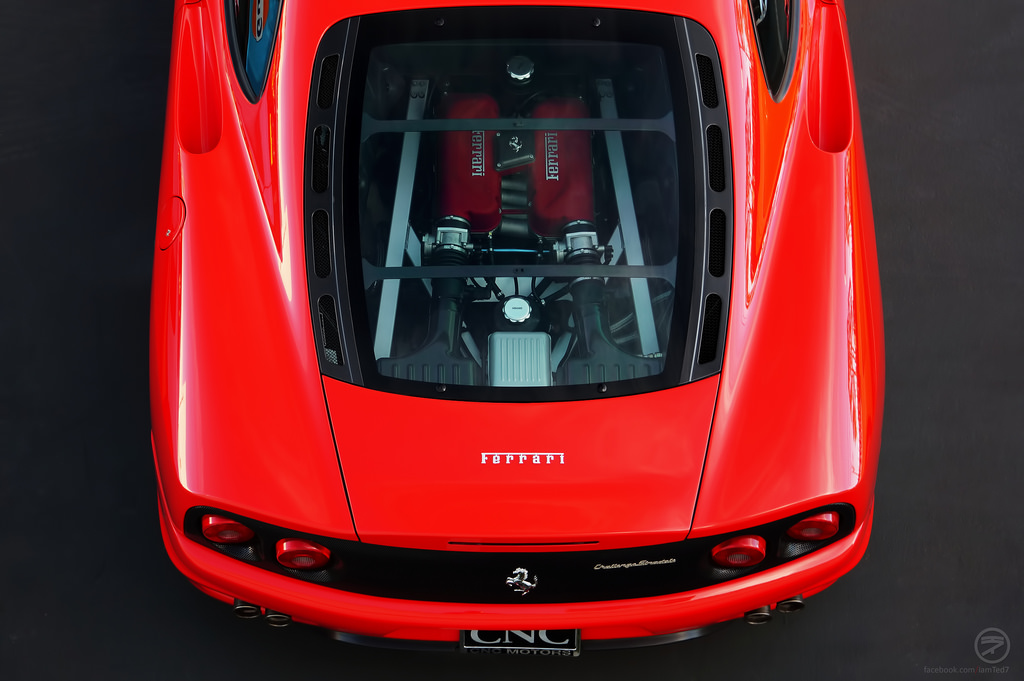
Unlike other Ferraris from the 80s and 90s, Montezemolo pushed Ferrari to extensively use aluminum for the 360 Modena, which decreased the weight 130 pounds lighter and increased rigidity by 64% over the the steel-framed F355. On the design side of things, Pininfarina was commissioned for the design and worked closely with Ferrari to incorporate it’s F1 engineering into the road going car. Because of this, the 360 Modena generated almost 400 pounds of downforce at 180 MPH.
Driving Experience
There has never been a Ferrari which you could jump into and drive so easily before. The 360 Modena allows you to not worry about driving to the local grocery store because the usability of it is relaxing compared to other models. After driving both the 360 Modena and the F430, I can tell you the 360 is more enjoyable in daily traffic and for canyon cruises while the F430 is more brute force. They both produce a lovely symphony from their V8s.
For the ultimate driving experience, the 360 Modena must be driven in Sport Mode which makes quite a few radical changes. For one, the already quick F1 Transmission upshifts even quicker, to the tune of 150 milliseconds. Downshifts are also enhanced with automatic throttle blipping for seamless downshifts. It can be a little clunky at times, but that is understandable as single-clutch transmissions all exhibit the same characteristics.
The ASR (traction control) system prevents wheel slipping by adjusting the engine management and rear brakes independently. On the other hand, Sport Mode allows for more wheel slip. You can, however, fully disable the ASR but do so at your own discretion.
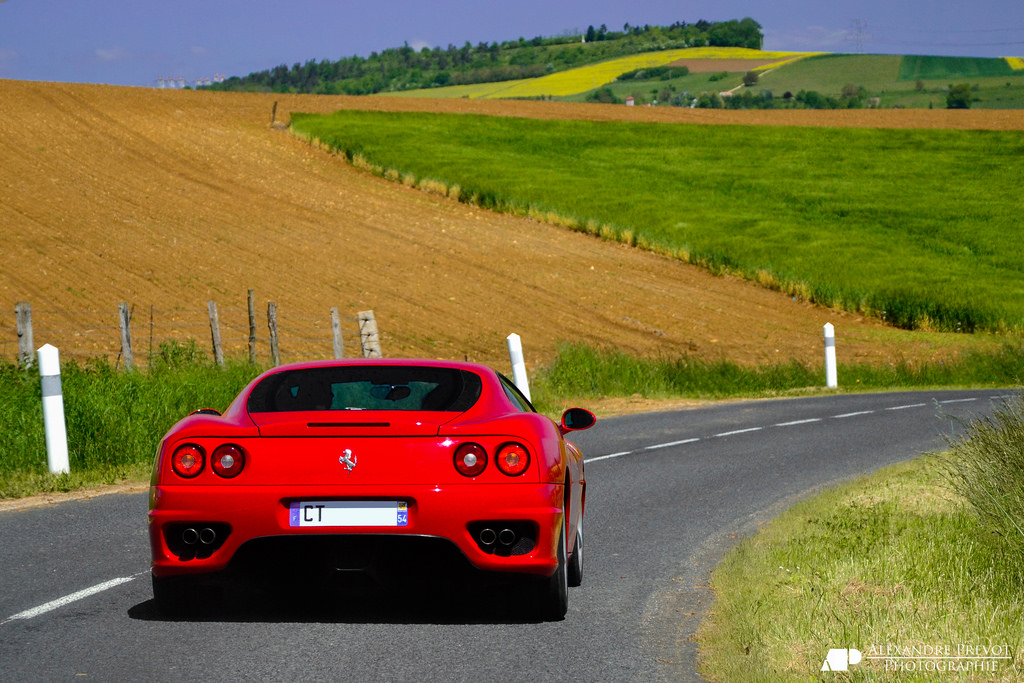
The Ferrari 360 Modena comes with active suspension that adjust the dampers based on speed, acceleration, and braking. Normal mode focuses on comfort and stability, while Sport Mode makes the ride noticeably firmer, which of course is better suited for aggressive driving.
For the cars that are fitted with the optional Factory Sports Exhaust, the ECU is programmed to open the exhaust bypass valves at a lower RPM in Sport Mode.
Hopping into the cockpit, you will immediately notice the exceptional craftsmanship that Italy is known for. The leather hides stretches in all the right places and are held tight by beautiful contrast stitching. If you are expecting the latest technological advancements like Bluetooth or SAT NAV, this car will certainly disappoint. While new Ferraris have LCD screens built into the gauge cluster and Mannetino switches on the steering wheel, the 360 has nothing more than a radio and AC controls. Driving is the core of the essence of the 360 Modena.
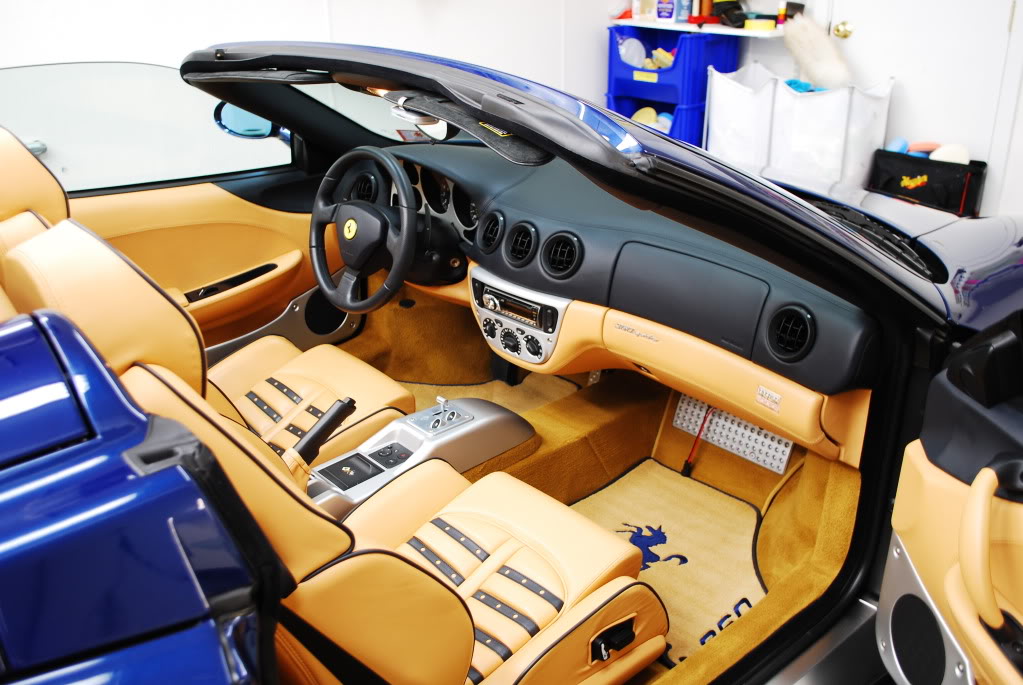
The mid-engine layout is nicely balanced so turns and sweeping corners are where the 360 shines at. With a curb weight at just under 3,300 lbs, the 360 Modena is agile and although there is a bit of understeer, the 400 HP is enough to induce oversteer when needed. On the straights, the 360 will pick up speed in the higher range of the powerband while howling to a 8500 RPM redline. The brakes are supplied from none other than Brembo so you can expect the 330mm steel disc brakes to stop on a dime.
Driving a 360 will make you feel like an F1 driver and while not the fastest Ferrari, it is still very enjoyable. Every little input or adjustment you make is near instantaneous, making you feel one with the car. That is what makes a Ferrari, a Ferrari.
The 360 Modena is quite simply built for both worlds; your daily commute to the office and the track or canyon on the weekend.
Common Problems and Issues
You have to remember is that Ferrari is still a small car company and every car is hand built and built to order. Ferrari, like any other Italian car maker (Maserati (pre Chrysler influence) and Lamborghini (pre Audi influence)), will have its quirks. It is actually not uncommon to get random Check Engine Light warnings. It’s just the nature of finicky hand build sports cars.
Also don’t assume that because someone has the means to own a Ferrari that they will take care of the car properly. That is why it is very important to get a Pre Purchase Inspection on ANY exotic car you buy. With that said, the Ferrari 360 Modena does have its fair share of issues. Here is a list of known issues…
Variator and Left Bank Tensioner
The variator controls the 360’s variable exhaust timing and sits on the end of the exhaust cam. If it fails, it can cause severe engine damage. After 2001, all Ferrari 360 Modenas left the factory with the updated parts. Luckily, there was a factory campaign recall to fix this problem so if a seller claims to have this fix done, simply call a dealer with the VIN to verify. Out of pocket expense to fix this can run upwards of $4,000.
Motor Mount and Frame Brackets
This bracket connects the motor mount to the frame and is prone to cracking. Fortunately, this issue was only seen on 1999 cars so 2000+ models came with the updated part. While it’s a small part, it is also not easy to install so labor costs can be in the ball park of $1,000
Early 360’s motor mounts wore out quickly as well and should be updated to the updated part number. Mounts run about $300 each and about the same for installation.
F1 Hydraulic Pump Relay
Most 360 Modenas, except late build cars, have an underrated relay that controls the F1 transmission’s hydraulic pump. If it fails, the pump will run until it burns out. Luckily, the fix is an easy upgrade to a 50-amp relay. This should run you no more than $200. Or you can buy a 6 speed manual and never worry about this problem. 🙂
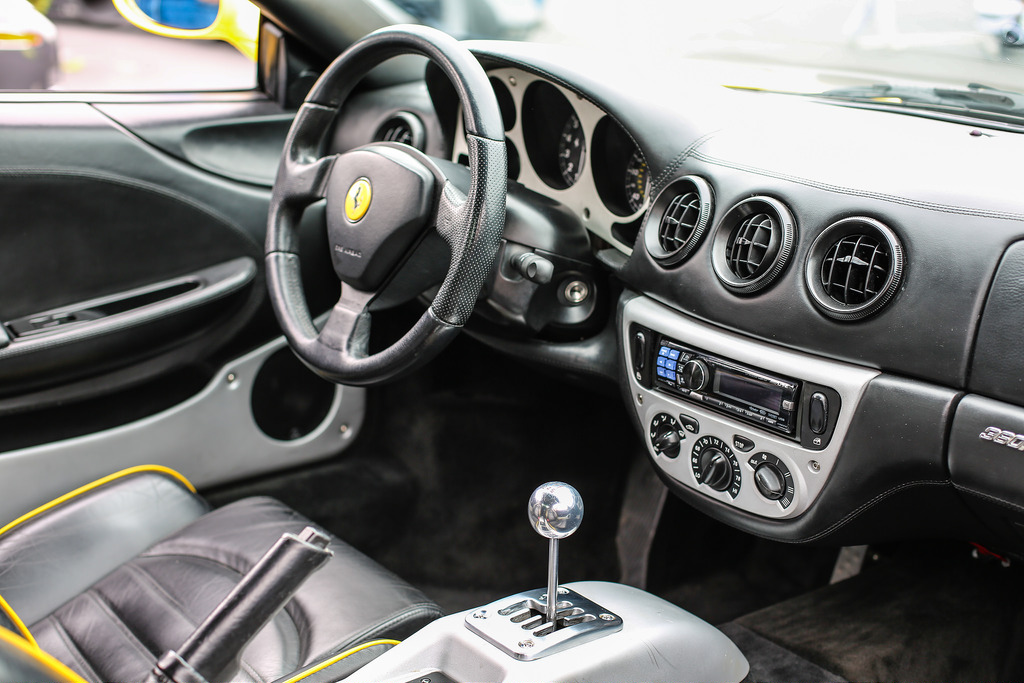
Transmission Mounts
Ferrari 360 Modenas of all years are known to have transmission mounts that wear out quickly as well. The fix for this is to use F430 transmission mounts which have a much longer life span. These parts costs about $200 but installation will run almost $700.
Pre-Catalytic Converters
The pre-catalytic converters (pre-cats) on 2000+ 360’s (99 did not have pre-cats) can sometimes break apart and get sucked into the engine. It’s a rare occurrence, but it can happen. A well seasoned technician should be able to inspect the condition of the pre-cats.
Interior Wear
While not really a major problem, if a 360 Modena has been sitting outside in the sun for too long, it can cause damage to the exposed leather surfaces and burst the seams. Also plastic buttons are known to wear and/or become sticky.
F1 Transmission Software
Early 360’s with VIN below 124875 came with a bad version of the TCU software that caused premature clutch wear. A dealer will be able to tell you what software version is on the car. Also some owners have put the more aggressive Challenge Stradale TCU tune on their cars.
Electrical Issues
Quite a few owners have experienced electrical issues. Most of them stem from a bad grounding source due to an aluminum chassis. Many owners have had to replace the battery several times. The instrument panel illumination can also go bad. Luckily, you can get it repaired fairly cheap than needing to replace the whole unit.
Shifter Bushings
If you are one of the lucky individuals to own a manual 360, you may run into the issue of bad shifter bushings that make gear changes a notch harder to slide into gears.
Ball Joints
Early cars had issues with the ball joints failing, especially for cars that sat and were not driven. Ferrari does not sell this piece individually but there are affordable aftermarket options to remedy this problem.
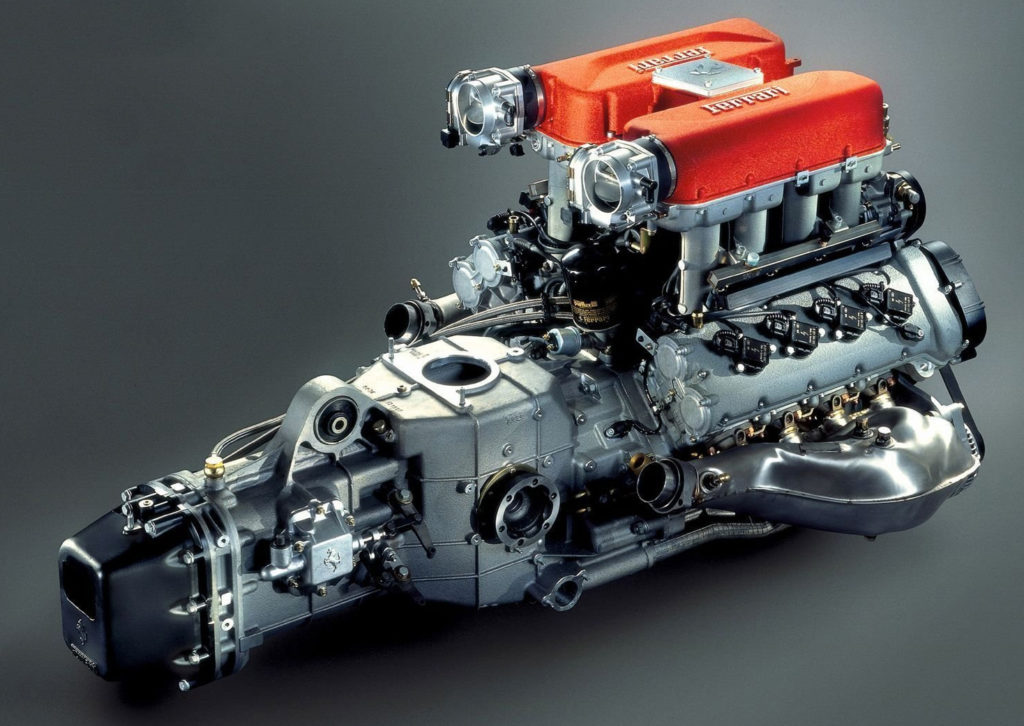
Maintenance and Cost of Ownership
Service costs on the 360 Modena are actually quite reasonable. Like most exotic cars, Ferrari recommends that you service your car annually, regardless of mileage. Here are the major items you need to know about…
Oil Change and Fluids
An oil change will run you about $300. A full fluid service is recommended once a year and includes transmission, power steering, brakes, etc, on top of your oil change. This will run you roughly $1,000.
Brakes
The rotors are standard steel so aftermarket rotor and pad options are abundant. Parts alone for all four corners will run you roughly $1,000.
Clutch
Clutch wear is entirely dependent on two things: the transmission you have, and your driving habits. F1 Transmission will always induce more clutch wear from engagement. You can have the dealer adjust the PIS (point of initial slip) to decrease clutch wear, which also improves jerkiness from a stop. Manual transmissions have far less clutch wear. In both cases, your driving habits will really dictate when your clutch needs replacing, and when it does, expect to shell out about $5,000 for a new clutch and labor, which isn’t too bad in the grand scheme of things.
Timing Belt
Ferrari recommends that you change the belts every 3 years or roughly about every 18,000 miles. This service will run about $1,500.
To sum it up, a minor service is about $1,000 and that includes primarily the fluids. A full service includes both the fluids and timing belt, so combined you can expect to spend upwards of $3,000. Any 360 you look at that has not been serviced within 2 years you should tread carefully.
Ferrari 360 Model Year Changes
1999
1999 was the introductory year for the Ferrari 360 Modena in the United States. MSRP was around the $150k range but varied greatly as each car was loaded with different options. These cars did not have pre-cats in the headers. This was a plus for many as not only were these cars rumored to be faster, but also not subject to pre-cat failures that could cause engine failure. HID xenon headlights were an option so you may see a few 360’s out there with halogen headlights.
2000
In 2000, Ferrari added the pre-cats to the headers for emissions standards. The Spider was added to the lineup with an MSRP of roughly $175k.
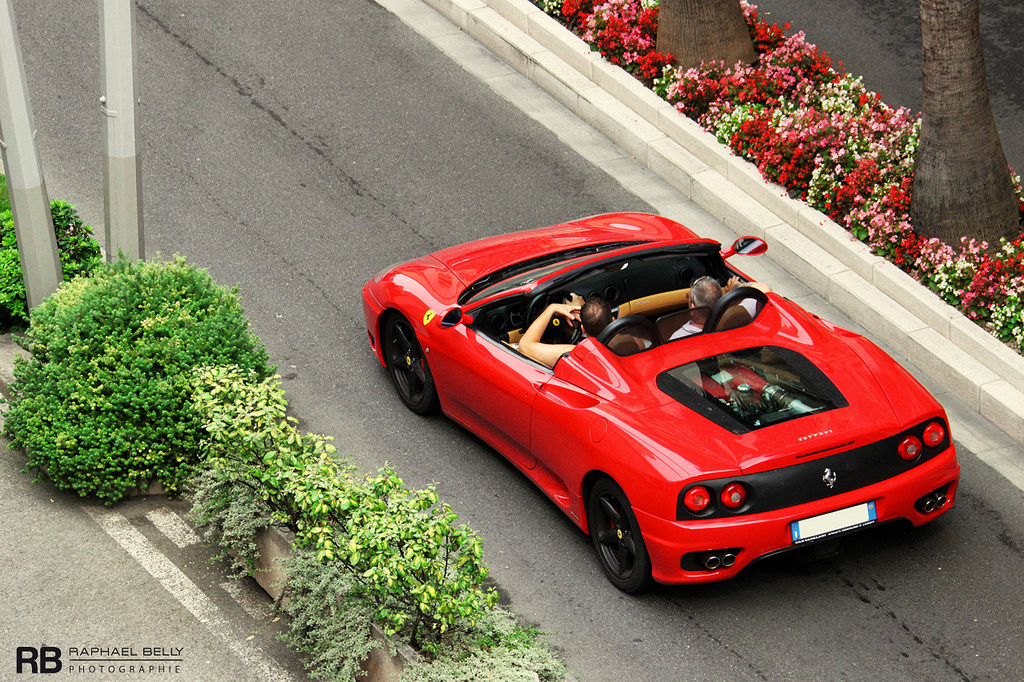
2001
HID xenon headlights became standard. Both the variator and starter ring gear issues were fixed for this year.
2002
New A-Arms were introduced to fix the ball joint issue. The 2002 360’s also let you upgrade the TCU to 2003 or Challenge Stradale spec. By this year, all major and minor have been resolved.
2003
2003 model 360’s had an all new TCU software update that allowed the dealer to manually set the PIS (point of initial slip) for clutch engagement. This TCU was compatible for older models but only the 2002.
2004
In 2004, Ferrari released the ultimate 360 Modena: the Challenge Stradale. The formula for quite simple: less weight and more power. There is no official count for number of Challenge Stradales made, but several reports of 1200 cars sold worldwide and a rumored ~378 for the North American market.
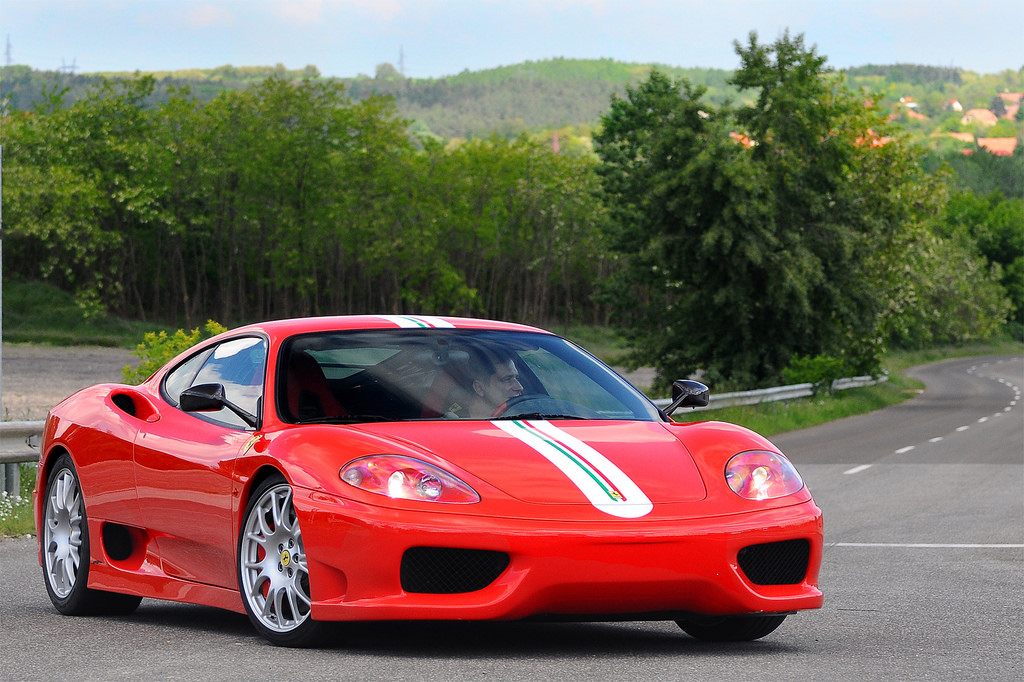
The list of changes compared to a standard 360 coupe is quite long, but from the exterior, the Challenge Stradale had nearly every panel revised (except the doors and hood) that not only looked more aggressive, but also increased downforce an additional 50%. Most cars had a painted stripe down the middle in commemoration of Italy. 19″ BBS Challenge inspired wheels wrapped in Pirelli Corsa tires hid the carbon ceramic (CCM) brakes borrowed from the new F430.
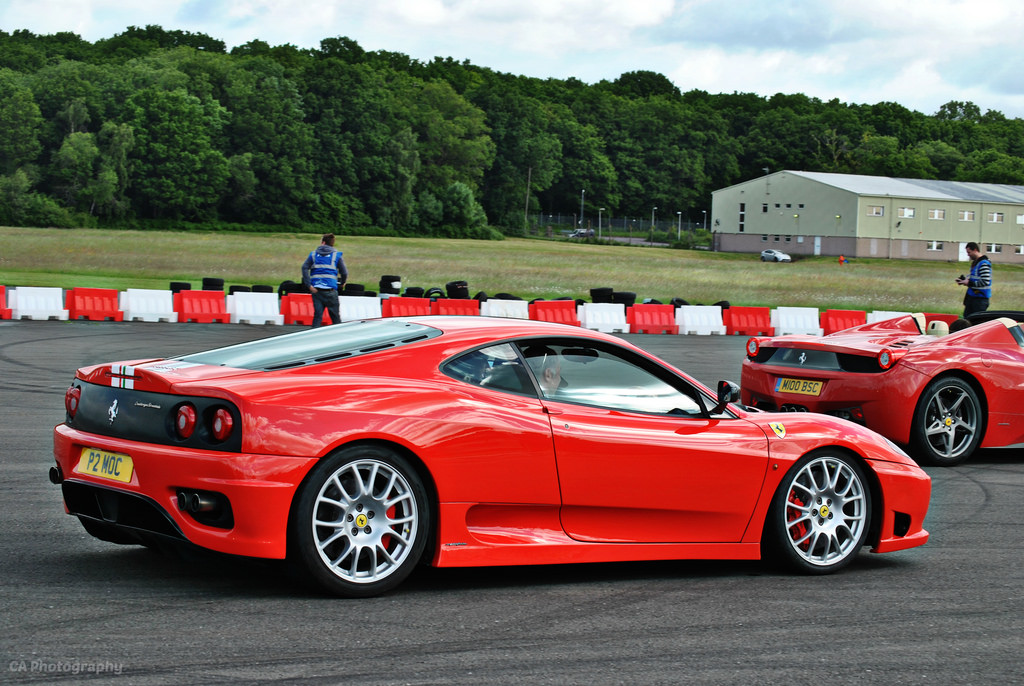
In an effort to drop nearly 200 lbs of weight, Ferrari incorporated the use of lexan instead of glass and removed any carpeting, insulation, or sound deadening. Carbon fiber was used extensively inside and out of the car from the mirrors, to the standard Sport seats, and the door and engine panels. Leather was replaced for alcantara inside the car.
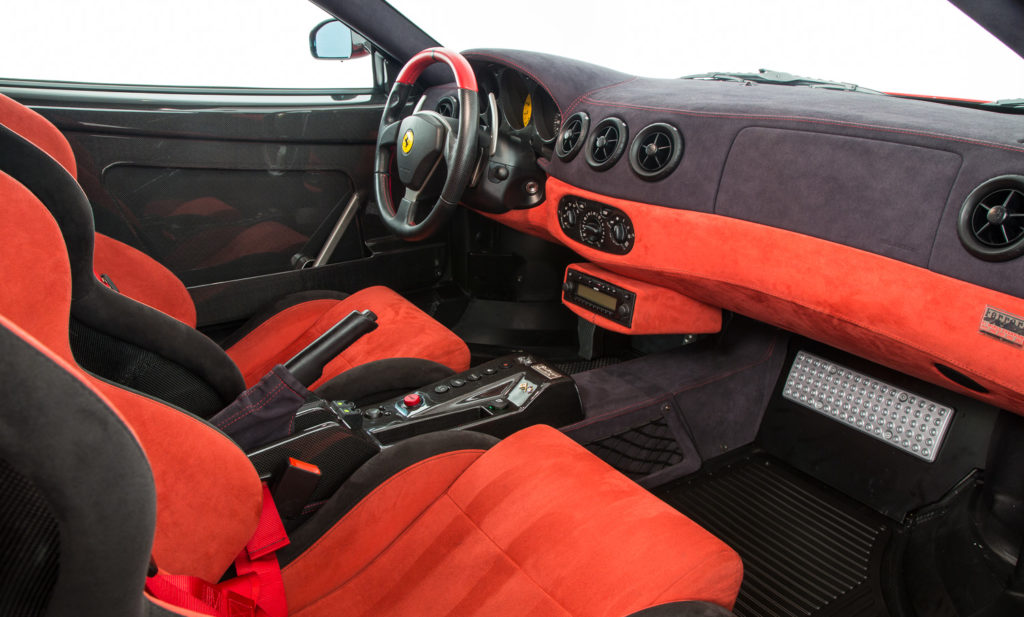
To not disrupt the already well balanced 360, Ferrari only bumped up the horsepower to a mild 425 HP with a low pressure exhaust system, machined ports and intake for more air flow, and lastly an engine remap. The transmission now shifted 40% faster than standard 360’s.
The Challenge Stradale sat on stiffer titanium springs that lowered the car by 15 mm. Turn-in was further improved by increasing the rear anti-roll bar by 1 mm that worked in tandem with adjustable dampers that were re-calibrated for the new available Race Mode. All these tweaks equated to 3.5 seconds faster than the standard 360 coupe around Ferrari’s test track.
The same level of customization was available on the Challenge Stradale as well. Below is a list of options available…
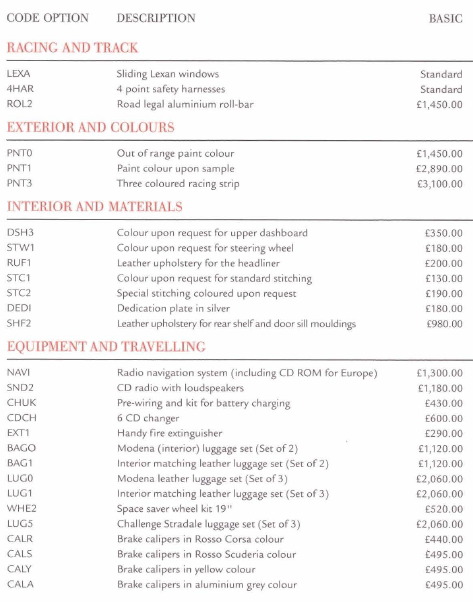
2005
2005 marked the the final production year for the 360 Modena in preparation for the new F430 replacement.
Ferrari 360 Options
Like all Ferrari’s, you could spec your order anyway you wanted, but at certainly at a cost. If you are worried about resale, it is important to factor in which options the car you look at has, as the right options hold value, and in some cases add value.
While most owners opted for the signature red Rosso Corsa paint, for a reasonable fee you could paint your 360 any color you wanted. The same extent of individualization continues in the cockpit as well as nearly every panel could be customized (seats as well) to a different color, including the stitching and piping. The same level of customization also continues down to the brake calipers.
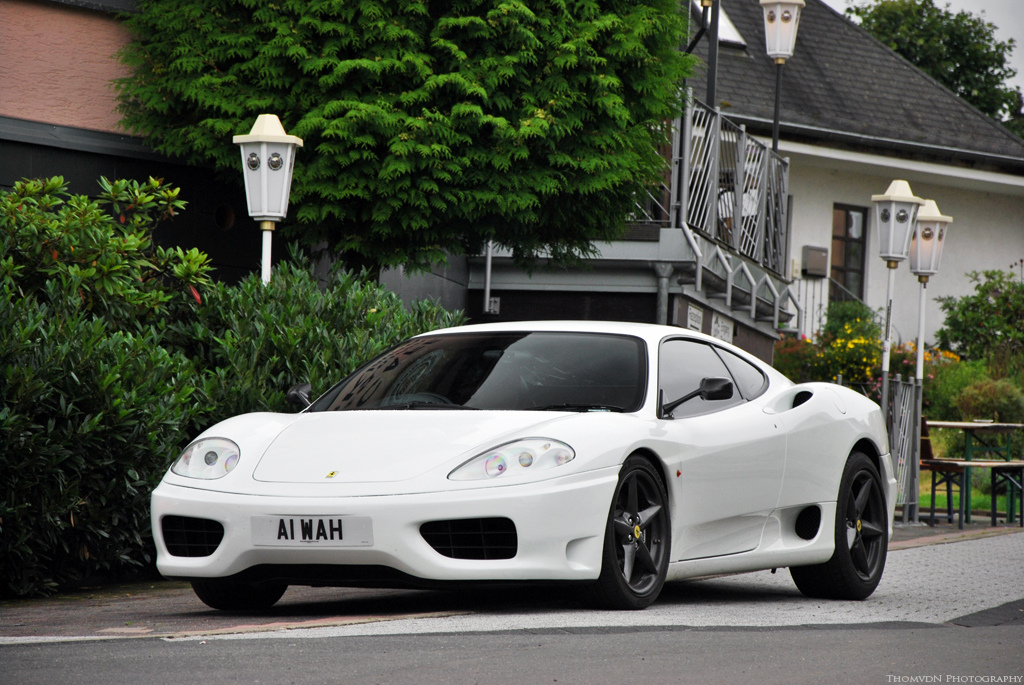
There were three seat options offered: Standard, Daytona, and Sport. Standard seats were as you can guess, standard, in both visual appeal and comfort. Daytona seats had extra side bolsters and mixed perforated inserts, usually in a contrasting color. Sport seats were carbon fiber shells and made specifically racing so they sit lower and had less padding. Both Standard and Daytona seats could be adjusted 6 ways electrically or manual, while the Sport seat was only a manual adjustment.
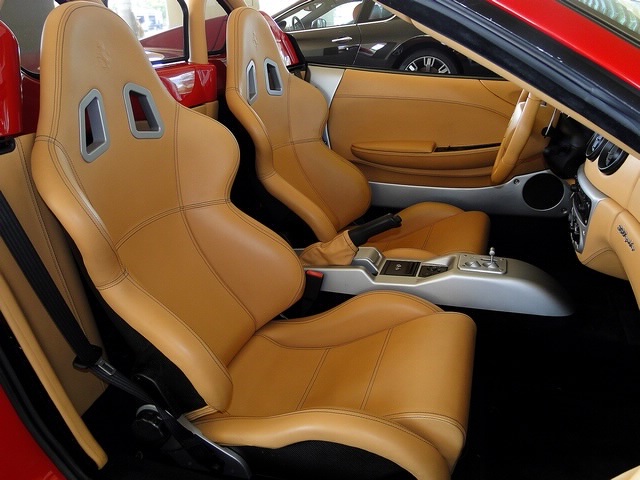
From an exterior standpoint, the optional front and rear challenge grills influenced from the Challenge Stradale and Challenge race car added much needed contrast, but also was functional for better engine cooling.
Five spoke 18″ Modular wheels made of alloy aluminum were an option, and although they looked better than the factory wheels, they weighed a touch heavier.
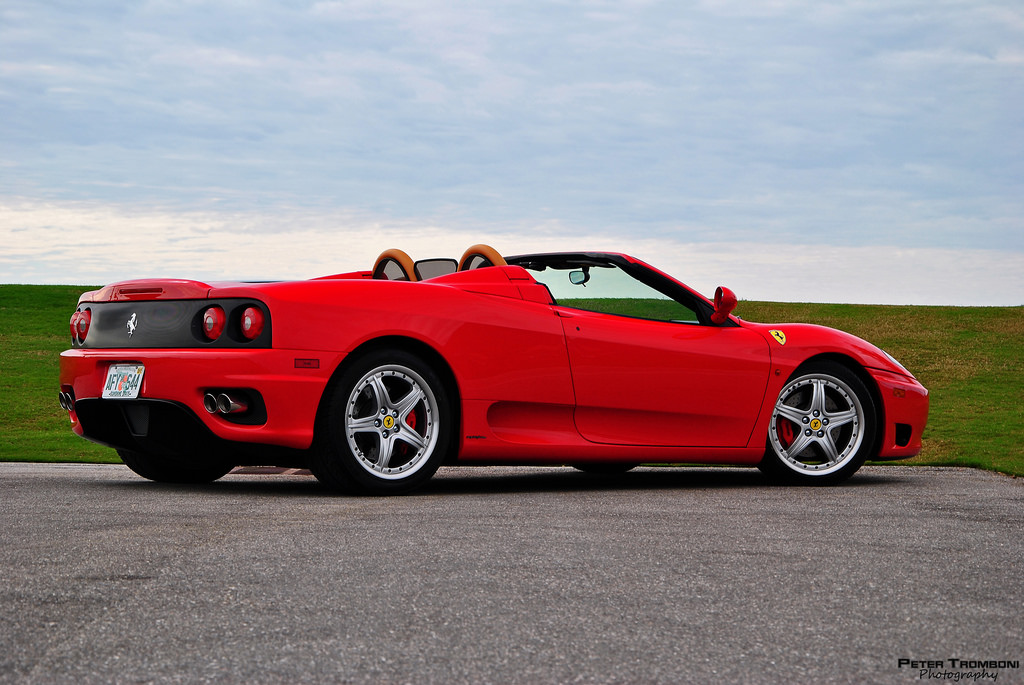
An available Hi-Fi sound system and 6 disc CD changer was also an option, however, we can pretty much bet most owners would’ve rather spent the money on an aftermarket exhaust anyways.
Here is a complete list of all options and pricing available for the Ferrari 360 Modena…
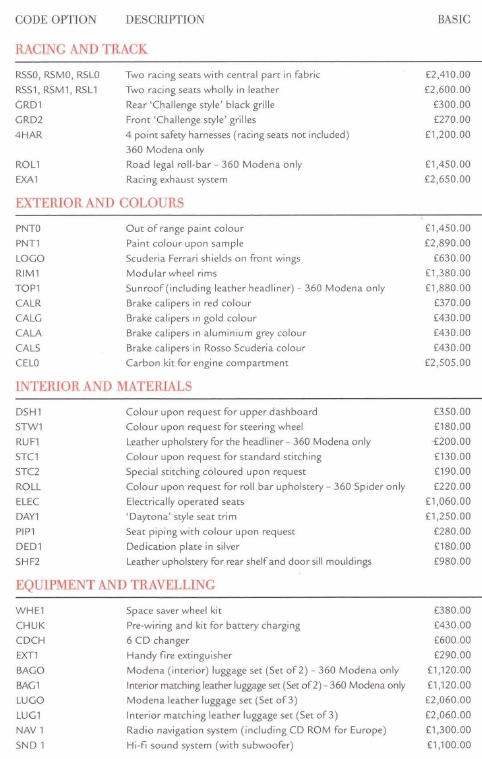
Best Ferrari 360 For The Money
Some enthusiasts will argue that one year is better than the other, but two years specifically stand out for us: 1999 and 2002 model years. While no two Ferrari 360 Modenas are alike, all cars from 99 to 05 have essentially the same engine and drivetrain. Since 80% of all 360’s were sold with the F1 Transmission, 6 speed manual cars are less common on the used market. They tend to carry a significant premium as the current market has made these cars more desirable. Personally, we would opt for a 6 speed manual but the F1 Transmission is just as good if updated to the 2003+ or Challenge Stradale TCU software.
1999 360 Modenas save you one less headache with with the lack of precats and many of the cars for sale, if not all, have had the variator fixed under the recall. If the car is well serviced then there is no reason to shy away from this model year. Even though the TCU cannot be upgraded via software, you can still update the actual TCU module from 2003+. Your best bet is a 6 speed manual if possible. A clean, well optioned, 99 360 Modena will run you in the low $60k range.
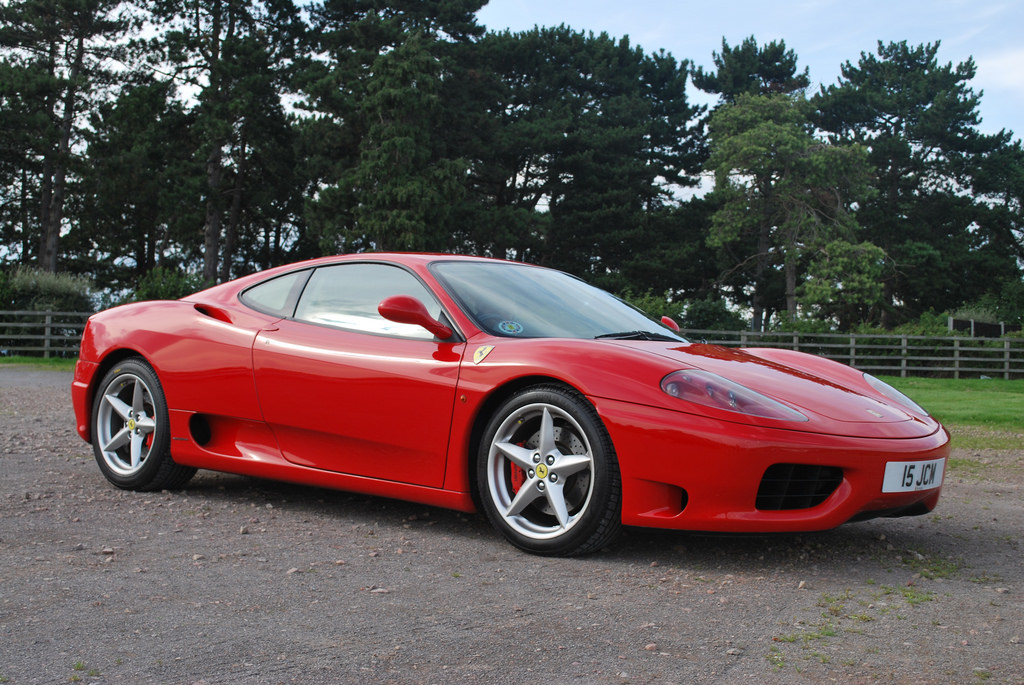
2002 360 Modenas had most of the major issues sorted out by this year. But like we said before, if a 99-01 car had all the issues fixed and documented, there is not much benefit going for an 02 or newer.
The right car to buy boils down to the options you want and color you like. Obviously a majority of 360’s on the market are available in red which makes it a safe bet. Certain options will help resale like Daytona or Sport Seats, Ferrari fender shields, challenge grills, and yes even a factory option sunroof.
Make sure any car you have your eye on has documentation of the service history to showcase the previous owners effort to maintain the car, especially the Ferrari recall campaigns issued by the factory.
Cars that are low mileage are not necessarily better. Higher mileage cars mean that the car has been driven which prevents mechanical components from dry rotting or seizing. If a car has been driven, then theres a better chance of issues popping up. Bad for the previous owner, but good for you if these issues have already been resolved.
Conclusion
The Ferrari 360 Modena is probably the best entry level Ferrari. Its usability, reliability, and beautiful engine note combine to make it one of the most fun and least expensive Ferrari’s on the market. Speaking of which, since these cars are inexpensive by Ferrari standards, some owners are unprepared to spend the money for correct and timely maintenance. You will want a car with a full, documented service history, even if it costs a little more. That’s the price of admission into the prancing horse club.
My final 360 advice is the same advice I give every Ferrari buyer: Do your research, buy the best car you can afford, and make sure you have it inspected by a shop that knows the model inside and out. The cost of repairing a bad 360 can easily run 25 percent or more of the purchase price so make sure you check all the boxes before handing over you hard earned cash.

